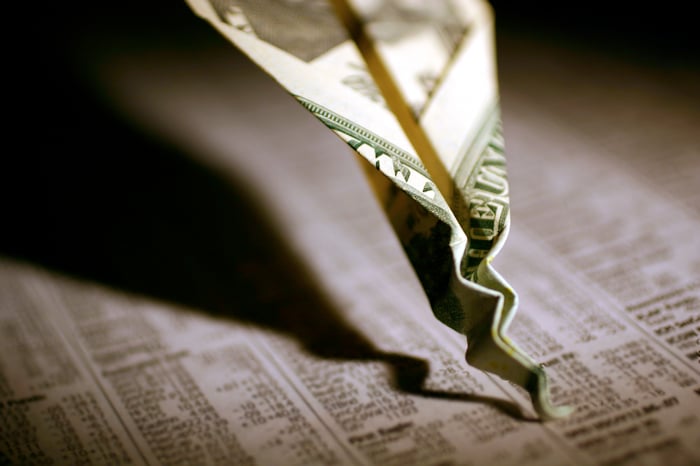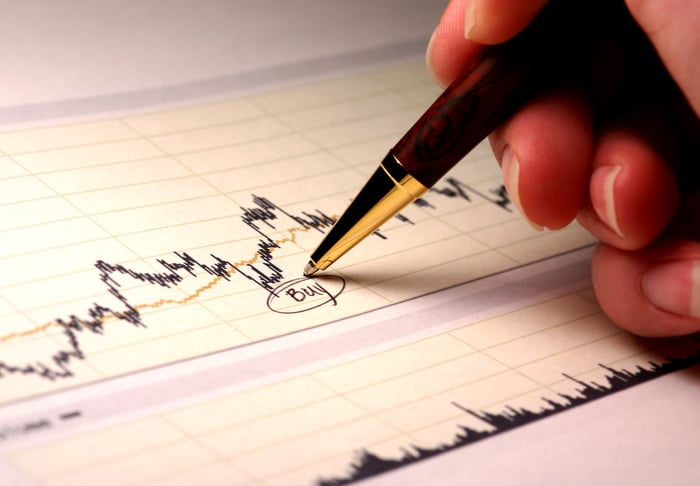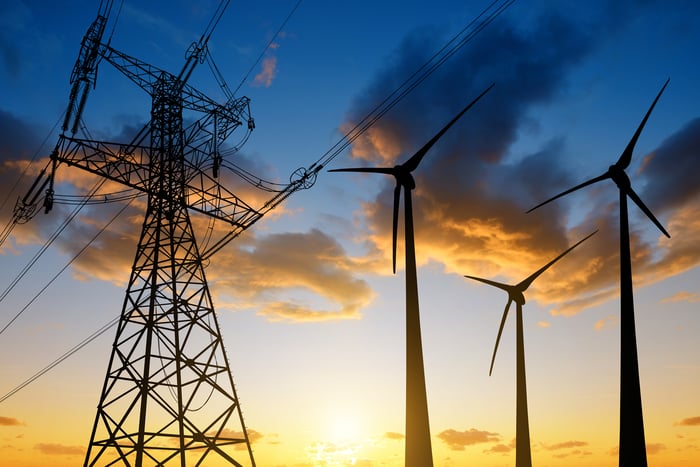It might be the last thing you want to hear, but it's the truth: A stock market crash is inevitable.
Since the March 23, 2020 bottom, investors have enjoyed a historically strong bounce-back rally -- the widely followed S&P 500 (^GSPC -0.46%) has gained an impressive 90%. But both history and valuation metrics unequivocally suggest that a big drop is upcoming for the stock market.

Image source: Getty Images.
History is pretty clear that trouble lies ahead
For example, there have been one or two double-digit percentage declines within the three years following a bottom in each of the previous eight bear markets prior to the coronavirus crash (i.e., dating back to 1960). Although bull markets tend to last years, rebounds from a bear market are never this smooth. We're nearly 15 months past the March 2020 bear-market bottom in the S&P 500 and have yet to see anything close to a double-digit correction.
To add to this point, data from market analytics firm Yardeni Research shows that there have been 38 double-digit declines in the S&P 500 over the past 71 years. That's a crash or correction, on average, every 1.87 years. Though the market doesn't adhere to averages, it does give a general sense of when to expect these hiccups.
On a valuation basis, the S&P 500's Shiller price-to-earnings (P/E) ratio is a waving red flag. The S&P 500's Shiller P/E -- a measure of inflation-adjusted earnings over the previous 10 years -- almost hit 38 earlier this week. That more than doubles its 151-year average, and it's the highest level in nearly two decades. The previous four times the Shiller P/E surpassed and held above 30 during a bull market rally, the index subsequently declined by a minimum of 20%.
Make no mistake about it -- a stock market crash is coming.

Image source: Getty Images.
Every crash or correction is an opportunity for patient investors to make money
However, a crash is no reason to duck and cover. While history may signal trouble ahead, it also tells us that each and every double-digit decline has been a buying opportunity. Eventually, every big drop in the major indexes is erased by a bull-market rally. When the next crash does occur, the following five high-conviction stocks can be confidently bought hand over fist.
CrowdStrike Holdings
Cybersecurity is projected to be one of the safest double-digit growth trends this decade. No matter the size of the business or the state of the U.S./global economy, protecting enterprise and consumer data is paramount. This means cloud-based cybersecurity stock CrowdStrike Holdings (CRWD 0.13%) can thrive in any environment.
CrowdStrike's success derives from its cloud-native Falcon security platform. Because it's built in the cloud and relies on artificial intelligence, it's growing smarter at identifying and responding to threats all the time. It's currently overseeing 6 trillion events on a weekly basis, and it's far more cost-effective at protecting data than on-premise solutions.
We can also look to the company's income statements to see clear-cut evidence that businesses favor CrowdStrike's cybersecurity platform. It's been retaining 98% of its clients, has seen existing clients spend 23% to 47% more on a year-over-year basis for the past 12 quarters, and recently reported that 64% of its customers have purchased at least four cloud module subscriptions. Scaling with its customers is CrowdStrike's ticket to big-time cash flow expansion.

Image source: Getty Images.
Brand-name businesses can make patient investors a fortune, and social media giant Facebook (META -10.56%) is the perfect example.
When the curtain closed on March, Facebook tallied 2.85 billion monthly active users (MAU) visiting its namesake site and an additional 600 million unique MAUs visiting WhatsApp or Instagram, which it also owns. All told, this equates to 44% of the global population interacting with its owned sites each month. There's simply no social media platform businesses can go to get their message to a broader (or potentially targeted) audience, which is why Facebook ad-pricing power is so strong.
But here's the kicker: Facebook hasn't even put the pedal to the metal. Although it's on track to generate more than $100 billion in advertising revenue in 2021, nearly all of these ad sales are coming from its namesake site and Instagram. WhatsApp and Facebook Messenger, which are two of the six most-visited social sites in the world, aren't being meaningfully monetized as of yet. Further, the company's Oculus virtual reality devices are still in the early stage of their growth. Suffice it to say, Facebook offers ample upside as its other operating segments are monetized and mature.

Image source: Getty Images.
NextEra Energy
Another high-conviction stock to buy hand over fist the next time a crash or steep correction strikes is electric utility stock NextEra Energy (NEE 0.51%).
Did I put you to sleep when I said "electric utility stock?" Electric utilities are traditionally known for their market-topping dividend yields and persistently low growth rates. But this doesn't describe NextEra Energy. NextEra has aggressively invested in renewable energy projects and is leading the country in solar and wind capacity. As a result of these investments, its electric generation costs have declined and its compound annual growth rate has consistently been in the high single digits for more than a decade. It also doesn't hurt that NextEra is front-running any potential green-energy legislation that might come out of Washington.
In addition to growth rates that are well above the sector average, NextEra still benefits from the predictability of energy demand. For instance, its regulated utilities (i.e., those not powered by renewable energy) require approval from state utility commissions before price hikes can be passed along to households. This might sound like an inconvenience, but it's actually great news. It means NextEra won't be exposed to potentially volatile wholesale pricing.

Image source: Getty Images.
Visa
When the next stock market crash arrives, payment processing kingpin Visa (V 0.05%) is a winning company to confidently buy hand over fist. It's also another brand-name company that can still make its shareholders a fortune.
Buying into the Visa growth story is a simple numbers game. Visa grows its revenue and profits when consumers and businesses are spending more. This happens when the U.S. and global economy are expanding. Although contractions and recessions are an inevitable part of the economic cycle, they tend to be short-lived. Meanwhile, periods of economic expansion are almost always measured in years. Buying into Visa during these short-lived crashes or corrections should allow long-term investors to be handsomely rewarded by this numbers game.
The other interesting thing about Visa is that it's shunned becoming a lender. You'd think that Visa could generate big bucks from interest income and fees by lending during these long-lived periods of expansion. But lending would also expose Visa to the credit delinquencies that arise during recessions. Operating solely as a payment processor means not having to set aside cash to cover delinquencies. It's why Visa rebounds so much faster than most financial stocks following a recession.

Image source: Amazon.
Amazon
Lastly (and who couldn't see this coming?), investors should take any discount they can get during a crash on e-commerce behemoth Amazon (AMZN -1.65%).
Amazon's online marketplace has proved virtually unstoppable for well over a decade. An April 2021 report from eMarketer pegged the company's share of U.S. online sales at 40.4%. That more than quintuples its next-closest competitor and effectively solidifies Amazon as the go-to source for online shopping in the U.S.
What about those pesky low retail margins, you ask? Amazon has signed up more than 200 million people globally to a Prime membership. The fees collected from Prime members help to offset some of the company's retail-based margin weakness. Prime members are extremely loyal to the Amazon ecosystem and spend far more than non-members, too.
But it's Amazon's cloud infrastructure segment that's the superstar. Amazon Web Services (AWS) brings in around one-eighth of the company's total sales but accounts for well over half its operating income. Since cloud margins are superior to retail and advertising margins, AWS is the company's key to explosive cash flow growth this decade.





